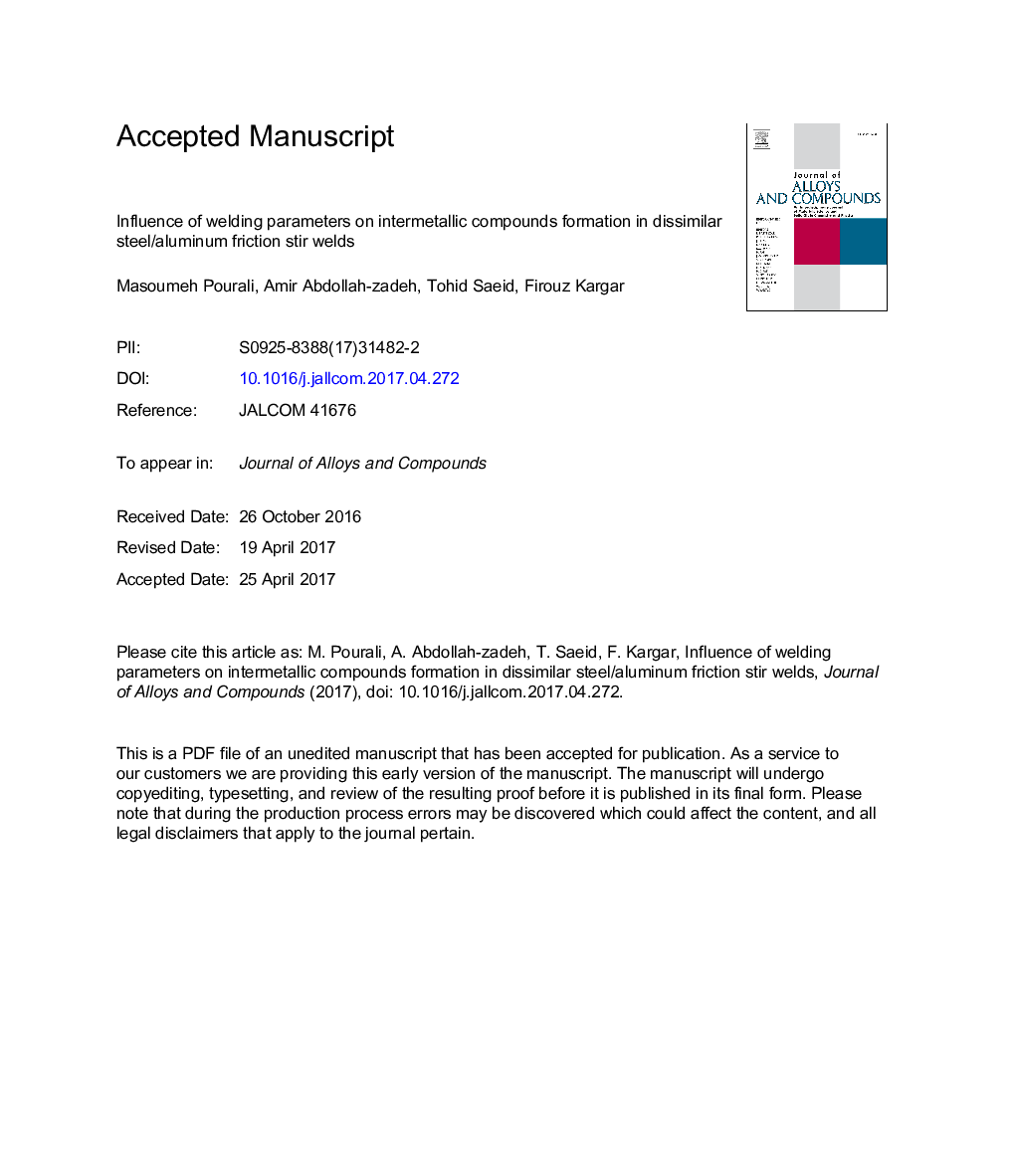| Article ID | Journal | Published Year | Pages | File Type |
|---|---|---|---|---|
| 5459156 | Journal of Alloys and Compounds | 2017 | 24 Pages |
Abstract
It is difficult to obtain a quality joining of steels to aluminum alloys by fusion welding processes due to the large difference between melting temperatures and the formation of thick brittle Al/Fe intermetallic compounds at the joint interface. In this study, lap welds between Al 1100 and St37 steel were performed by solid-state friction stir welding with different tool rotation and welding speeds. FeAl and Fe3Al with thicknesses of up to 93 μm were the intermetallic compound layers formed at the joint interfaces. Shear tensile test and Scanning Electron Microscopy results showed that Fe-rich intermetallic compounds are not detrimental to joint strength and some defects, like voids, are responsible for the deteriorated weld strength. The welding parameters determine bond properties by controlling the distribution of welding energy as heat or mechanical work. At low welding speeds, mechanical work is the dominant factor. The optimum tensile strength is achieved at low welding speeds and high rotation speeds, where both factors of heat input and mechanical work are in equilibrium.
Related Topics
Physical Sciences and Engineering
Materials Science
Metals and Alloys
Authors
Masoumeh Pourali, Amir Abdollah-zadeh, Tohid Saeid, Firouz Kargar,
